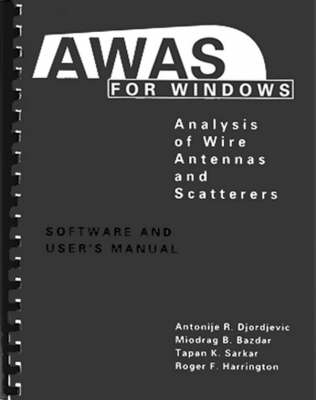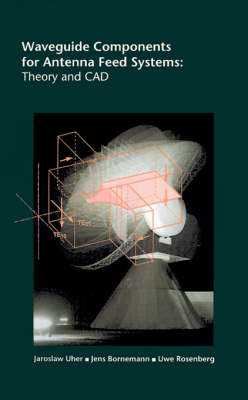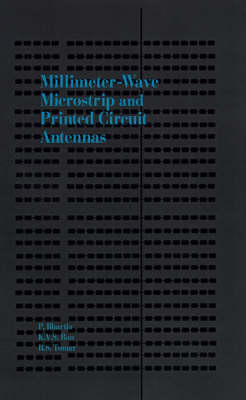Antennas & Propagation Library
4 total works
Featuring a completely redesigned user interface, AWAS for Windows enables the user to perform extremely efficient, accurate, and affordable antenna analysis. This program analyzes antennas and scatterers by solving the two-potential equation. It evaluates current distribution, near and far fields, input impedance, and more. Due to special numerical integration techniques employed, fast results are obtainable without sacrificing accuracy. A powerful resource for research and design engineers, at home or in the office, AWAS for Windows lets the user interactively define the geometry of any particular wire antenna or scatterer. The program provides the flexibility to edit and automatically check input data, and provides a variety of graphics output capabilities.
This new version for Windows includes the following program improvements: greater ease of data entry; entries in input data forms can now be accessed at random in all cases, facilitating data correction; commands for plotting output results are more easily accessible; greater capability for the analysis of complex structures - the program can accept structures with up to 500 nodes, 320 segments, and 16 ports; four times as many unknowns; twice as much angular and co-ordinate steps; and context-sensitive online help. The AWAS for Windows kernel program can also be used effectively on its own, or incorporated into a program, such as an optimization procedure for antenna synthesis. Using this program, various antennas, such as simple monopoles and dipoles, loops, broadcast tower antennas, log-periodic and Yagi-Uda arrays may be analyzed. The program may be used to evaluate electric and magnetic fields produced by electrical circuits and systems in EMC/EMI design.
This new version for Windows includes the following program improvements: greater ease of data entry; entries in input data forms can now be accessed at random in all cases, facilitating data correction; commands for plotting output results are more easily accessible; greater capability for the analysis of complex structures - the program can accept structures with up to 500 nodes, 320 segments, and 16 ports; four times as many unknowns; twice as much angular and co-ordinate steps; and context-sensitive online help. The AWAS for Windows kernel program can also be used effectively on its own, or incorporated into a program, such as an optimization procedure for antenna synthesis. Using this program, various antennas, such as simple monopoles and dipoles, loops, broadcast tower antennas, log-periodic and Yagi-Uda arrays may be analyzed. The program may be used to evaluate electric and magnetic fields produced by electrical circuits and systems in EMC/EMI design.
WIPL
by B. M. Kolundzija, etc., Jovan S. Ognjanovic, Tapan K. Sarkar, and Roger F. Harrington
Published September 1995
WIPL is a low-cost PC commercial software for the analysis of metallic structures. It allows the user to interactively define the geometry of any metallic structure as a combination of wires and plates, and then check this by using a 3-D drawing of the structure. WIPL's sophisticated analysis features include evaluations of the current distribution, radiation patterns and admittance parameters. It analyzes log periodic antennas, wire antennas with corner reflector, antennas mounted on metallic vehicles, wave guide horn antennas (including coaxial to wavelength transition), slot antennas and field coupling through apertures in metallic enclosures. WIPL also provides the user with a variety of list and graphic output capabilities, including 2-D and 3-D graphics. User specification of a large number of unknowns is not required to run the program. WIPL executes most computations in under 60 seconds, making the software ideal for CAD. The system requirements for WIPL are: IBM PC or compatible, 286 (386 or 486 recommended). 640 KB RAM, Microsoft Windows 3.1 or later. Graphics: Hercules, CGA, EGA (VGA recommended). DOS 3.3 or later.
Waveguide Components for Antenna Feed Systems
by J. Uher, etc., Jens Bornemann, and Uwe Rosenberg
Published 19 December 1993
This book delivers an in-depth examinations of the three basic field-theoretical methods used for the design aid of different waveguide components. You'll find CAD algorithms, examples of their applications, and operational principles of various components used in antenna feed systems.
Millimetre Wave Microstrip and Printed Circuit Antennas
by P. Bhartia, etc., K. V. S Rao, and R. S. Tomar
Published 19 December 1990
Provides information needed to design millimeter-wave microstrip and printed circuit antennas from analysis methods and materials selection to antennas for particular applications. Special focus is given to the issues that impact the ability to scale microwave frequency designs to the millimeter-wav



